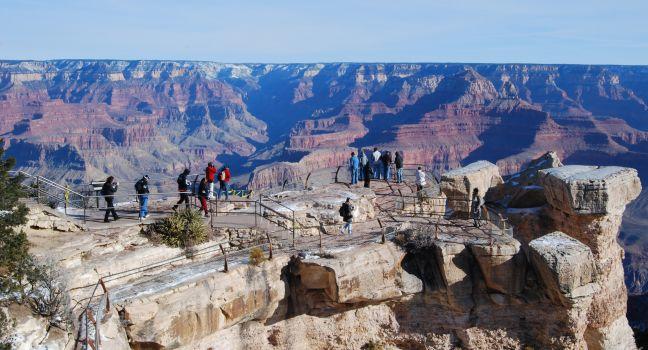Bright Angel Trail
This well-maintained trail is one of the most scenic (and busiest) hiking paths from the South Rim to the bottom of the canyon (9.6 miles each way). Rest houses are equipped with water at the 1½- and 3-mile points from May through September and at Havasupai Gardens (4 miles) year-round. Water is also available at Bright Angel Campground, 9¼ miles below the trailhead. Plateau Point, on a spur trail about 1½ miles below Havasupai Gardens, is as far as you should attempt to go on a day hike; the round-trip will take six to nine hours.
Bright Angel Trail is the easiest of all the footpaths into the canyon, but because the climb out from the bottom is an ascent of 5,510 feet, the trip should be attempted only by those in good physical condition and should be avoided in midsummer due to extreme heat. The top of the trail can be icy in winter. Originally a bighorn sheep path and later used by the Havasupai, the trail was widened late in the 19th century for prospectors and is now used for both mule and foot traffic. Also note that mule trains have the right-of-way—and sometimes leave unpleasant surprises in your path. Moderate.




